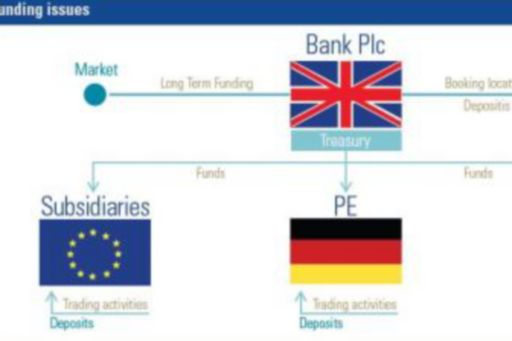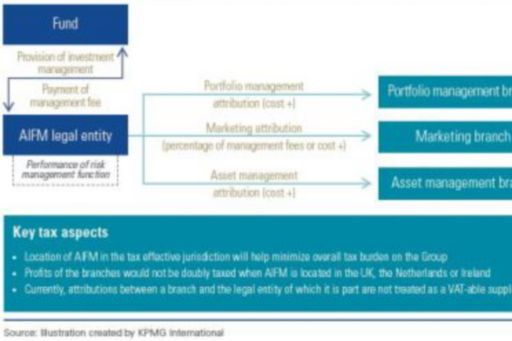Developing business models and structures: The new tax and transfer pricing environment
Developing business models and structures
Frontiers in tax brings to light the most pressing tax issues in the financial industry — thinking beyond borders, beyond tomorrow and providing valued insight.

Introduction
A number of forces are making transfer pricing issues – and the organizational, structural and operational decisions which drive them – increasingly important. Since the financial crisis, fiscal agencies have focused greater attention on extracting ‘fair’ tax revenues from transfer pricing arrangements especially through the BEPS project. Rising protectionism and competition between jurisdictions are spurring more intense scrutiny by individual tax authorities.
At the same time, regulatory authorities are increasingly imposing change in the pursuit of a more stable global financial system: to shrink balance sheets, to increase capital and liquidity, to simplify structures to allow orderly resolution, to increase transparency and limit the attractions of ‘tax havens’.
All these developments carry potential implications for intra-company crossborder flows and they have the potential to attract more intensive scrutiny of transfer pricing issues by fiscal authorities. Unless the tax issues are considered thoroughly as key aspects of corporate strategy, alongside those of structure and operations, significantly adverse tax results may follow. The argument can be illustrated by considering some current issues in banking and in investment management.
Bank tax and transfer pricing issues
Political leaders and regulators are driving large, multi-national banks to hold much higher levels of capital. In December 2011, the Basel Committee on Banking Supervision published final rules to increase the quality and quantity of capital required to be held by internationally active financial institutions. Regulators in both Europe and the US require banks and certain holding companies to maintain a minimum amount of contingent capital that is convertible to equity in times of financial distress; and generally requires banks to replace certain nonequity securities with instruments that function more like equity.
As a result of these regulatory pressures, contingent convertible securities (‘CoCos’) are rapidly becoming very popular. These instruments are generally issued as long-term, subordinated debt, but automatically convert into equity – strengthening the capital base – when the bank’s capital declines to a specified level, or when the regulator deems the company’s viability is under threat. Major banks which have issued CoCos over the last couple of years include Credit Suisse (2013 & 2011); Barclays (2013, 2012 & 2011); Bank of Cyprus (2011); Bank of Ireland (2011); Lloyds Banking Group 2009); Rabobank (2010).
CoCos raise novel tax implications. Their particular attraction arises when their equity aspects make them qualify against regulatory capital requirements, while their debt characteristics mean the associated interest payments might be tax deductible. Interest on convertible debt is generally treated as deductible. However, where convertibility is fixed and predetermined, interest may not be deductible, since unlike ‘true’ debt the purchaser has no right to a definite sum on maturity. Under the US law, interest deductions are disallowed if a substantial portion of principal or interest may be paid in, converted to, or otherwise determined in reference to equity at the option of the issuer or the holder.
Where CoCos are issued in one jurisdiction (e.g. the UK) and held by investors in another (e.g. the US), they may be treated as debt in the first jurisdiction and as equity in the second, resulting in a double benefit: deductible interest and favorable capital treatment in the UK and attractive dividend yield in the US. Regulators are tending to look favorably on new forms of risk-bearing capital such as CoCos because they help strengthen bank balance sheets. However, fiscal authorities are increasingly focusing on restricting the abuse of artificial BEPS; this may lead them to change the tax rules in respect of hybrid instruments.1 It is unclear, then, whether and to what extent CoCos may continue to enjoy the tax benefits of debt for the payer.
Increasing bail-in capital through convertible securities also raises significant cross-border transfer pricing issues. If interest-bearing instruments are raised at the group parent level, and retained there, this will permanently depress the parent’s profitability. Retaining a permanent structural loss-maker at group level distorts assessments of value and performance: rational economics as well as fiscal pressures imply that the cost of the additional regulatory capital should be transferred through the group. However, this raises critical issues of how risks and benefits should be priced and transferred across borders and between jurisdictions. For example, should differential credit ratings be applied between a parent and subsidiary? Should subsidiaries in territories with weaker – and riskier – economies, where capital raising is more expensive, pay an additional country risk premium?
The diagram below illustrates in simplified form some of the structural and cross-border implications.

Fiscal authorities everywhere are seeking to maximize tax revenues. Those in weaker economies, in particular, are likely to resist the imposition of additional inward cost transfers which reduce their domestic tax takes. The potential for competition between national authorities is clear, and disputes are likely to increase.
Banks are unlikely to find a solution which suits all parties. Instead, they will come under increasing and contradictory pressures. It will be important to develop a clear strategy in full awareness of the regulatory, tax and operational implications. The aim should be to get ahead of the game by making the necessary structural changes when raising the additional bail-in capital and other longer term debt for liquidity purposes.
The broad direction of current developments is clear: regulators are increasingly focusing on each legal entity carrying its own liquidity and capital. The key strategic challenge therefore is to determine a clear position – whether separate legal entities, permanent establishments or branch structures – and create a defensible case for capital structures, interest charges and the associated results. Tax and Transfer Pricing considerations need to be at the heart of these decisions over the coming period.
Investment management: Substance not form increasingly important
Regulatory pressures are imposing increasing change on the investment management sector in the wake of the financial crisis. Concerns over global financial stability are less acute than they are in the banking sector; however, the transparency and consumer protection agendas are equally as significant. And the investment management industry is also subject to general public and political concerns over what is perceived as improper tax avoidance and use of tax havens like the Cayman Islands.
In Europe, a key measure is the Alternative Investment Fund Managers Directive (AIFMD).2This came into force in July 2011, giving Member States two years to transpose in local law. Under the Directive, all alternative investment fund managers (AIFM) established in the EU or which manage EU alternative funds or which market AIFs into the EU are subject to a new authorizing and monitoring regime. Fund managers will have to apply for authorization in order to manage an Alternative Investment Fund if the amount of assets under management exceeds certain thresholds. Managers authorized in one EU jurisdiction will be eligible for ‘passports’ which will allow them to offer management and marketing services throughout the EU.
AIFMD will drive a number of changes in corporate structure, either directly or because companies will find them desirable in the new environment. For example, the passporting provisions create an opportunity for groups to simplify their corporate structures – using one legal entity to perform roles in all jurisdictions through branches. Marketing and investment management activities can be performed in any European jurisdiction, exploiting regulatory approval in the ‘host’ EU nation.
The Directive also places greater emphasis on the risk management role: risk management needs to be undertaken directly by the AIFM, and must be organizationally separate from portfolio management. Identified staff such as individuals who are able to influence significant risks assumed by the fund will have to have part of their remuneration deferred. The administration of this deferral may be more easily achieved if all employees are employed by one legal (AIFM) entity, rather than many entities seeking to administer the regulatory requirement individually.
Portfolio management can still be delegated. However, the fund manager needs to retain overall responsibility, sufficient seniority and control to be able to oversee the functions delegated.
These issues are focusing closer attention on the different components of the investment management value chain, and on ensuring that the form and substance of organizational structures are more closely aligned, more effectively regulated and appropriately taxed. The OECD Action Plan on BEPS3 is likely to lead to greater scrutiny of the substance underlying offshore structures and individual functions such as management, marketing and ownership of brands and intellectual property. Country by country reporting will shine a spotlight where profits are located in low tax jurisdictions with minimal substance. Tax authorities are likely to require that profits be more closely aligned with the relevant components of the value chain.
Where AIFMD stresses new or enhanced functions, as we have seen in the case of risk management, it is appropriate that firms attach an economic value to the function and ensure that it is charged out accordingly. However, the principle is easier to state than to translate into transfer pricing arrangements which will hold water in a BEPS environment.
These considerations mean that investment management companies face a series of novel challenges:
- reconfiguring organizational structure and the location of functions such as marketing and management
- reflecting the changes to the value chain which follow from regulators' stronger focus on functions such as risk management
- aligning the substance of organizational functions with the theoretical
- structure to ensure that profits are correctly located
- determining the transfer prices for various functions across the organization in a defensible manner so that fees charged for marketing or management reflect services delivered.
The EU passporting provisions offer some flexibility. For example, opportunities around the new emphasis on risk management, but impose an additional layer of complexity when tax considerations are taken into account. Effective arrangements for group domicile and the location of different functions can help minimize the overall tax burden, avoid double taxation and in a number of cases limit liability to VAT.

Conclusion
The lesson is clear: tax considerations specifically the impact of BEPS, need to play an integral role in the development of strategy in responding to current regulatory developments.
There are risks unless existing structures are adapted to the new environment:
- for banks especially in the areas of Transfer Pricing models for capital and liquidity; and
- for Investment Managers, the transparency brought by country by country reporting, where profits are allocated to countries with insufficient substance.
However, taking tax, transfer pricing and VAT into account in the design stage should enable business models to be constructed that meet regulatory requirements but are still efficient from a tax perspective.
- cf: Action Plan on Base Erosion and Profit Shifting, OECD 2013
- cf AIFMD: Beware the tax impacts, Frontiers in Tax, December 2012
- ibid
